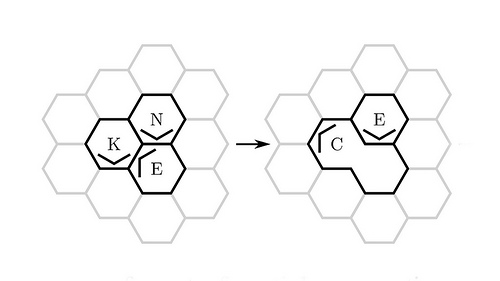
Amoebas (or Amebas as the kids today call them) are interesting little animals that have inspired lots of thought among roboticists on how life interacts with an environment. Now they’ve inspired a team of researchers to develop a new self-organizing particle system. Researchers Shlomi Dolev from Ben-Gurion University of the Negev, Israel; Robert Gmyr and Christian Scheideler from the University of Paderborn, Germany; and Andréa W. Richa from Arizona State University describe their idea in a new paper, “Ameba-inspired Self-organizing Particle Systems” (PDF format). From the abstract:
Self-organizing particle systems have many interesting applications like coating objects for monitoring and repair purposes and the formation of nano-scale devices for surgery and molecular-scale electronic structures. While there has been quite a lot of systems work in this area, especially in the context of modular self-reconfigurable robotic systems, only very little theoretical work has been done in this area so far. We attempt to bridge this gap by proposing a model inspired by the behavior of ameba that allows rigorous algorithmic research on self-organizing particle systems.
The authors describe some speculative ideas of cellular-sized robots that could be mixed with paint and used to cover man-made structures like buildings, acting as sensors to measure traffic, wind load, or structural integrity. Even more advanced uses might include biological robots that act as sensor and actuator, reconfiguring themselves as needed to form biological delivery devices or chemical factories. Also, I just really like the hexagonal grid they used as an improvement over more traditional square grid spaces.
